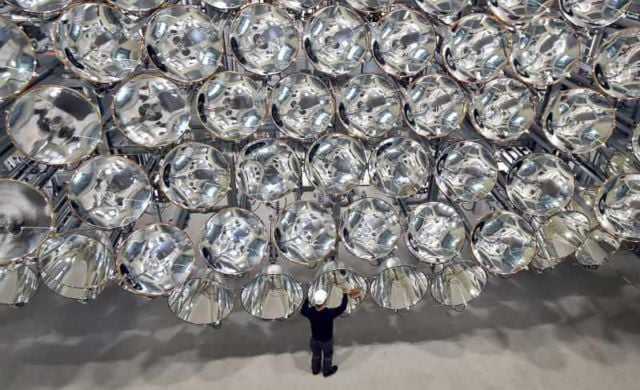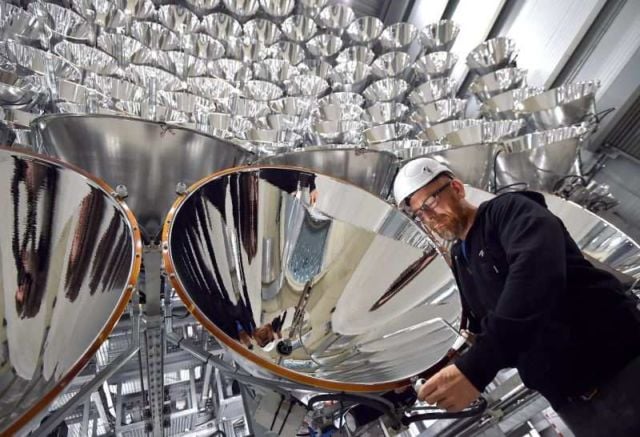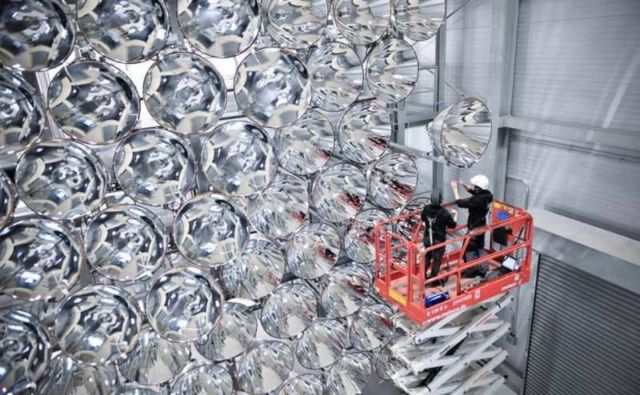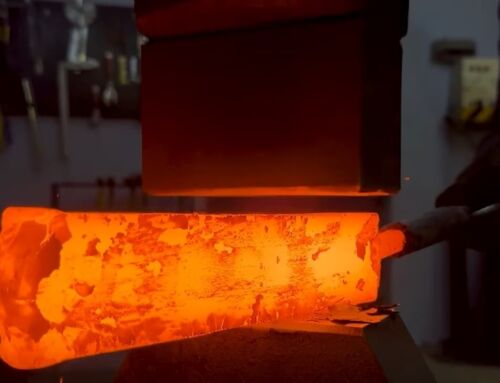Scientists switch on world’s largest ‘artificial sun‘ in German lab.
If German researchers are successful, their artificial sun Synlight project at DLR facility, will help make renewable hydrogen fuel a reality.
Above, Synlight. Credit DPA
The world’s largest artificial Sun started shining in Jülich on 23 March 2017.
In the three-storey Synlight building, there are 149 Xenon short-arc lamps. For comparison, in a large cinema, the screen is illuminated with a single Xenon short-arc lamp. The scientists can focus these ‘radiators’ on an area of 20 by 20 centimetres.
With Synlight’s 350-kilowatt array, this results in 10,000 times the intensity of the solar radiation at Earth’ surface.
Synlight. Credit DLR
Temperatures at the target point of the lamps can reach up to 3000 degrees Celsius. Researchers use these temperatures to manufacture fuels, including hydrogen.
Remmel emphasised the significance of research for the energy transition:
“We need to expand existing technology in practical ways in order to achieve renewable energy targets, but the energy transition will falter without investments in innovative research, in state-of-the-art technologies and in global lighthouse projects like Synlight.”
Credit DLR/Markus Hauschild
Hydrogen is considered to be the fuel of the future because it burns without producing carbon dioxide. But the production of hydrogen – by splitting water into its constituents of hydrogen and oxygen – needs significant amounts of energy. In future, this will be obtained from the Sun.
Sunlight in central Europe is unreliable and irregular, so an artificial Sun is the preferred choice for developing production processes for solar fuels.
via universetoday
source DLR facility








Leave A Comment